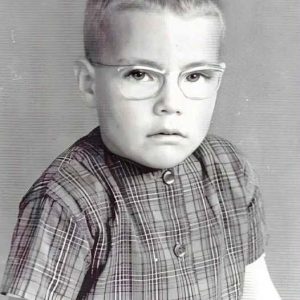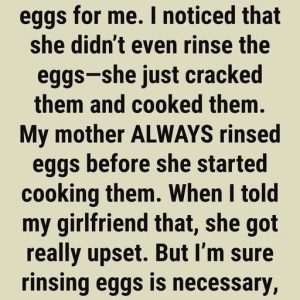When my grandmother moved into the nursing home, I stood in her dimly lit living room surrounded by the quiet hush of a life being packed into boxes. The scent of aged wood, faint perfume, and decades of cooking hung in the air, blending into something profoundly bittersweet. My siblings had already begun sorting through her belongings, eager to claim the items she had promised them: my sister with her pearl necklace carefully encased in velvet, my brother with the antique watch collection he had admired since childhood. I lingered, feeling a strange mixture of anticipation and apprehension. My grandmother had always been precise in her gifts, choosing items carefully for each of us, yet when she handed me a small, wooden recipe box, my chest tightened in disappointment. The box was worn, scratched, and seemingly ordinary, a relic of her kitchen rather than a treasure worth inheriting. I forced a polite smile, kissed her cheek, and thanked her, but as soon as she turned her attention away, I felt the sting of being left with “nothing.” My siblings exchanged quiet looks and soft laughter that cut deeper than I wanted to admit. That evening, the recipe box sat on the small table near my front door, an object I could neither appreciate nor understand, and I almost made the mistake of discarding it without a second thought.
As I walked past it that evening, preparing to take out the trash, I heard a voice call my name. It was Marie, my neighbor, an older woman who had lived on the street for decades and had always treated me like one of her own grandchildren. “Hold on,” she said gently, stepping toward the box. “Are you really throwing that away?” I hesitated, feeling a flush of embarrassment. “It’s just a box of recipes,” I muttered. “Nothing special.” Marie, however, knelt beside it, brushing off a thin layer of dust as if revealing a hidden treasure. “May I?” she asked softly. I nodded, curiosity creeping in despite my skepticism. She opened the box with care, her hands steady and reverent, and as she lifted the top layer of cards, I noticed something I hadn’t expected: nestled beneath the index cards were black-and-white photographs, envelopes with small keepsakes, dried flowers, bits of ribbon, and even a folded note in my grandmother’s handwriting. Each item seemed imbued with meaning, each one a fragment of her life meticulously preserved. As Marie handed me a photo of my grandmother standing at a small stove, smiling broadly, I realized these weren’t mere cooking instructions. They were stories, memories, and tangible fragments of a woman’s life—the woman who had nurtured us, laughed with us, scolded us, and taught us the subtle lessons of compassion, patience, and love.
Sitting on the floor with the box open between us, I began examining its contents more carefully. Each recipe card carried the faint imprint of past meals, smudges of oil, flour, or chocolate marking the card like fingerprints of history. They were written in a rhythm that reflected both haste and care, suggesting moments when she had cooked late at night or while entertaining friends, moments when life’s chaos met the order of her loving hands. Between the recipes were envelopes holding dried flowers labeled by year, buttons from garments of long-passed relatives, and receipts marking special occasions. I realized, slowly, that my grandmother had chosen me for this gift not because it was the most glamorous or monetarily valuable, but because it carried the essence of who she was and what she had valued: memory, love, and the act of giving. She had understood me in ways my siblings had never needed to. Where they were drawn to sparkle and gold, I would understand stories and history, appreciate the beauty in small acts, and honor the continuity of life through everyday rituals. My perspective shifted, and I felt a profound connection forming not only to the items themselves but to the woman who had crafted a life so carefully and intentionally.
Over the next several hours, I became immersed in the contents of the box. I read each card aloud to myself, savoring her precise yet imperfect handwriting. Recipes became stories, culinary directions transforming into snapshots of holidays, birthdays, and quiet evenings. I laughed at the quirks she had noted—the pinch of salt added “just because” or the caution to “stir slowly, or the neighbors will complain”—and I cried at the moments that spoke of love and tenderness. A note tucked between the cards simply read: “You always cared more about people than things. I know you will understand these better than anyone.” It struck me then how profoundly my grandmother had understood me, choosing not the flashy or the collectible, but the deeply personal, knowing I would treasure the intangible as much as the tangible. The box was a chronicle of her life, a tangible manifestation of her memory, and it had been entrusted to me because she believed I would carry it forward, not for profit, not for display, but for preservation of legacy.
The following day, I visited my grandmother at the nursing home, bringing with me the first recipe I had chosen from the box: her famous cinnamon rolls. I baked them slowly, allowing the scent to fill my kitchen and fill me with a sense of closeness to her. Sitting by her bedside, I placed the warm rolls before her, and her eyes lit up immediately at the familiar aroma. “You used my recipe,” she whispered, her voice soft but infused with pride. I nodded, unable to fully articulate the whirlwind of emotions inside me. “I found everything you left for me,” I said simply, reaching for her hand. She squeezed it lightly, smiling, and I finally understood the depth of her gift. It was not merely a box; it was a legacy, a lesson in valuing history, sentiment, and the ordinary moments that, stitched together, create a life worth remembering. My siblings, seeing the reverence with which I handled the recipes and keepsakes, slowly began to grasp the depth of what they had overlooked. They asked for copies of the recipes, eager to reconnect with the memories she had shared through food, and I happily obliged, realizing her intent had never been to create competition over objects, but to cultivate connection through memory.
Months passed, and the recipe box became more than just a collection of cards and keepsakes. Each holiday, I prepared dishes from her collection, each gathering turning into a retelling of her stories, her humor, her compassion. Friends and family alike began to recognize the profound richness in her recipes, not just for flavor but for the stories each dish carried. The box became a bridge between generations, a way to share lessons, memories, and love long after she could no longer participate actively. Even my siblings, initially dismissive, learned that value is not always measured in sparkle or monetary worth; sometimes, the true treasures are those that carry memory, sentiment, and legacy. Through this box, my grandmother’s presence remained tangible, a reminder that the most valuable things are often hidden in plain sight, disguised as ordinary objects, waiting for someone willing to see their significance.
Now, years later, the box rests prominently on a shelf in my home, worn but revered. Every card, photograph, and memento is preserved carefully, reminders not only of my grandmother but of the values she imparted: patience, love, and attention to the small yet meaningful details in life. I reflect often on how close I came to discarding it, and the thought still makes me shiver. The lesson is clear: value is not always immediately obvious, and the greatest gifts are often those that challenge us to see, to understand, and to cherish. Through the simple act of preserving her recipes and keepsakes, I learned that true inheritance is not measured in material wealth, but in the legacy of care, stories, and memory we leave behind. In that sense, the recipe box was the most precious gift she could have given me—a lifetime condensed into a wooden box, a tangible bridge to the past, and a reminder that love, thoughtfulness, and meaning are priceless.





